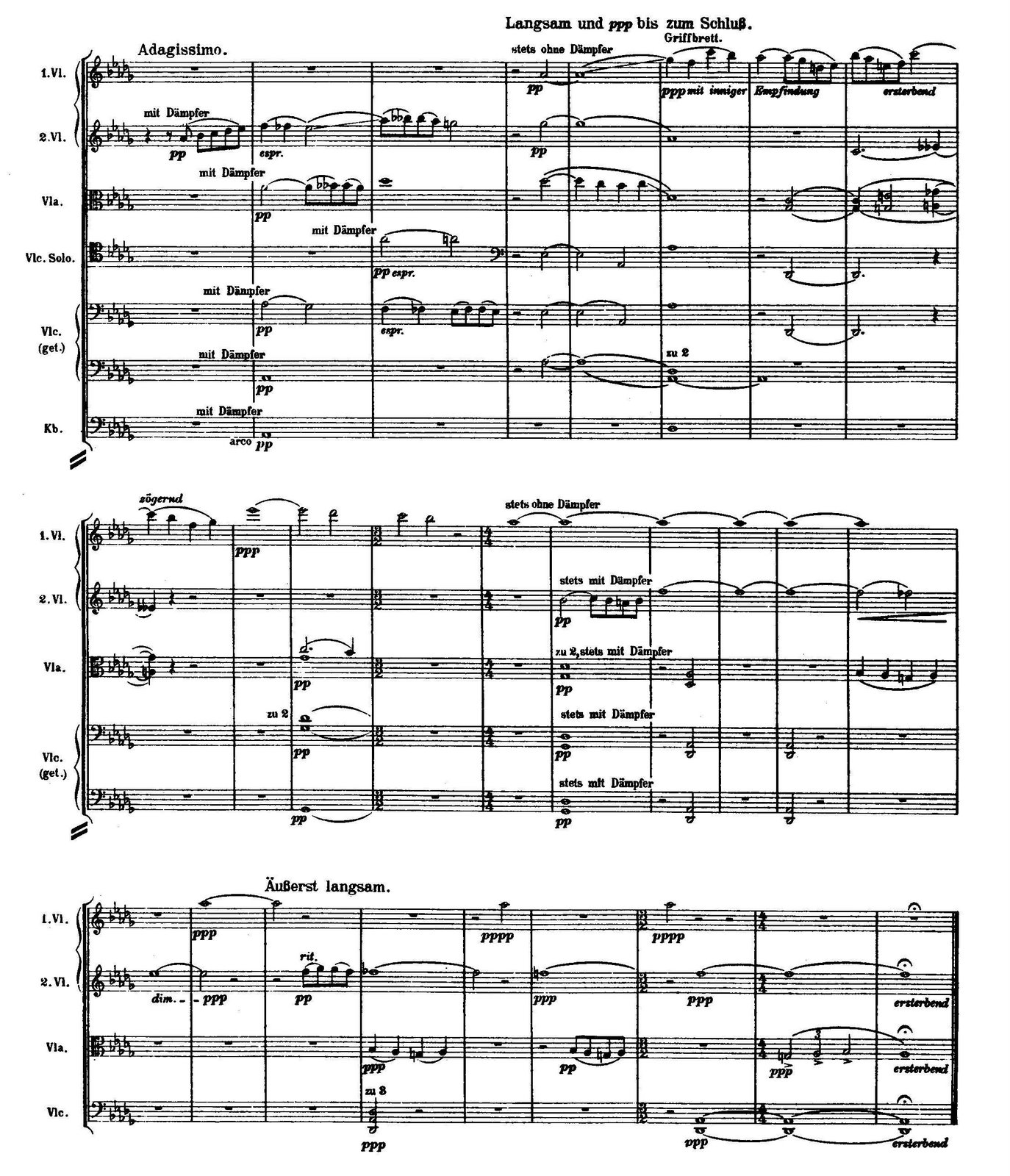Mahler 9 at Ravinia
July 21 2009It is terrifying, and paralyzing, as the strands of sound disintegrate … in ceasing, we lose it all. But in letting go, we have gained everything.
- Leonard Bernstein
It is music coming from another world, it is coming from eternity.
- Herbert von Karajan
I love the fact that I was able to find two quotes from diametrically opposite musicians, both of whom express the essence of Mahler’s Ninth better than I could. The truth is there is no shortage of great Mahler 9 quotes; hell, Lewis Thomas even wrote an essay describing his feelings for Mahler 9 and how they were irrevocably changed by his views on the Cold War.
After seeing Beethoven 9 on Saturday, I moved (upgraded?) to Mahler 9 on Sunday. I was back in the pavilion, in a nice seat toward the back but right in the middle so I could basically see everything. On a miserably cold Chicago summer day, Mahler 9 brought clarity and perhaps even hope to the viewers.
Mahler wrote his Symphony No. 9 directly after the Das Lied von der Erde, which the CSO played the previous weekend. In Das Lied, the text speaks of returning to the planet upon death and consequently rebirthing every spring. In Das Lied, Mahler is merely exploring his mortality; in the Ninth, he sees it eye to eye.
There is no doubt that Mahler intended for this symphony to be, if not his farewell symphony, then at least his symphony about Death. This analysis was already done in great detail by the great Mahler biographer Henry-Louis de La Grange (incidentally, that is a great place to read up on analysis of all of Mahler’s works).

I will stick with what stood out to me. The first movement was well-played and well-paced. Conlon shaped the climaxes expertly, as each one showed something slightly different. The second movement was good, with the bassoons playing their solo theme with great precision and quality of sound.
The third movement is like a virtuoso piece for orchestra. It’s fast, chromatic, loud, and strident. The CSO played fantastically and were completely into it. They took a slightly faster tempo than convention, and I loved the result. I could see the entire orchestra moving as one in the few places when all the parts would converge into a unison line for a few seconds before diverging again. This was exciting music played by the world’s best who were actually trying to play their best.
Because they had set off the third on such a frenetic, driving pace, there was a lot more contrast when they finally hit the little patch near the end of the movement in which the theme for the fourth is first introduced. This was amazingly effective – the cry of this melody sung out compared to the shouts preceding it.
To which we reach the fourth movement. Let me just state that for me probably nothing will ever top the two Bernstein recordings of Mahler 9 when he was at the height of his powers (that is, he had reached his musical maturity and hadn’t yet come to his musical senility) – with the Boston Symphony Orchestra at Tanglewood and with the Berlin Philharmonic, both live performances in 1979, recorded months apart. Bernstein is the perfect representative for the fourth movement; he possesses the emotional capacity to wring out every last bit of heart-rending thought from the piece, and he also possesses the musical intelligence to shape the climaxes so they build on each other.

I love the fourth movement. Mahler basically sings at the top of his lungs for the entirety, the intensity never waning until the end. Throughout this outpouring of singing, the music slowly builds, like a wave gathering strength, until it finally reaches the second and final major climax.
The climaxes to me are the points in the movement when the strings are suspended in air with their held notes, just waiting to come down to the resolution (this also happens right at the beginning of the movement). Conductors can and do milk these climaxes, forcing their audience to wait for the final resolution. However, it’s absolutely the sign of an orchestra that is in sync to be able to do that. It requires professionals that are able to react to the slightest hint from the conductor of a movement in notes. Bernstein was the master of this. Conlon actually did quite well.
The passage described above occurs three times, once in the beginning, then the two major climaxes later on. Conlon held out more the further he got into the piece. In the beginning, he did the passage nearly in time. By the end, the entire hall was waiting to see Conlon move. I absolutely loved it, and the final climax was exactly what I believe Mahler intended it to be – all the energy is spent, all the emotion has escaped, and now one can accept Death. After the weight of the final climax from the CSO, I was able to accept the final few minutes of the death, as the strings and winds slowly brought the piece to an end.
My praise for Conlon in this performance has thus far been effusively positive, but I’d be remiss not to mention what I perceive to be his biggest weakness. He simply does not excite me as a conductor. He strikes me as a very mechanical and exacting professional, although I have no evidence of that. He obviously loves Mahler’s music very much; I just wish he would open up and really live in the moment – I think the CSO would respond well to it.
Contrast Conlon with Bernstein (I know, it’s like comparing a Hyundai to a Mercedes, but still). In the aforementioned Bernstein-BPO performance, Bernstein gets so worked up when the buildup to the second climax begins that he actually falls off the podium*. Conlon merely started waving his arms a little faster. I just want to see him move and respond a little bit – from my viewpoint, the CSO gave him so much, and he didn’t give back.
* I want to explore this recording in much greater detail later on, but for now, I want to mention that it definitely sounds to me like he falls or at least trips up somehow. I sometimes can even make out him saying something like “I’m alright” after the tumble.
Robert Chen, Charlie Pikler (especially), and the horns section were amazing in solos. I’ve been going to Chicago Symphony Orchestra concerts for the past 4 years, and I’m still routinely awed by the power and significance of the horn sound, and in general the brass sound. Also, please keep in mind that the CSO had just finished Beethoven 9 the previous night, less than 24 hours ago (!). That they were able to come back from that quick turn and play a more difficult piece at an even higher level makes it easy for me to say that the CSO is the best in the world (of course, I haven’t seen anyone in Europe live in concert yet, so my opinion is crap).
I felt a longer silence than usual between the conclusion of the piece and the start of the applause (avec standing ovation). I think we all needed to assess what was just witnessed – I saw it as one man’s terrifying vision of death turned tranquil and just. Mahler’s Ninth shows us we should not be scared of Death; instead it is the right and inevitable result at the end of a long and fulfilling journey.

comments powered by Disqus